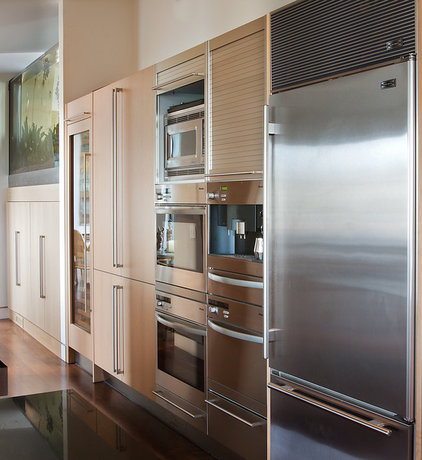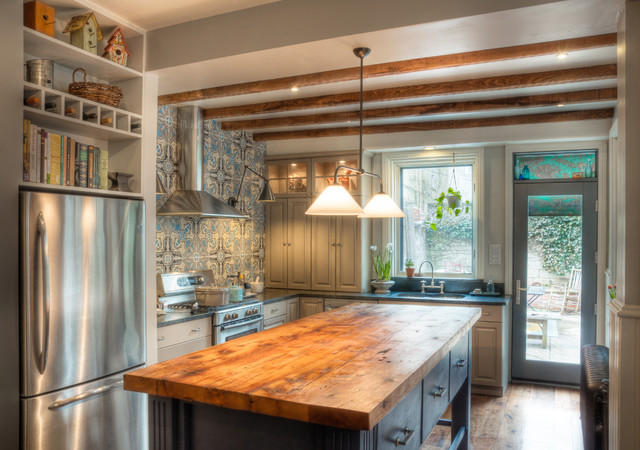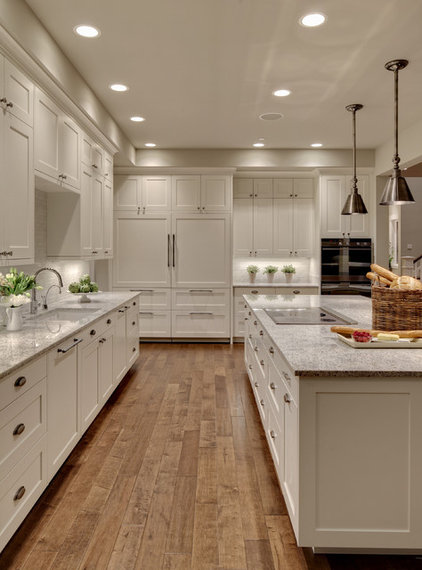How to Plan a Kitchen Workflow That Works
How to Plan a Kitchen Workflow That Works
Every kitchen has workflow needs as unique as the people who use it. Here's how to design your space to suit your needs
We talked with three architects to get their professional tips and tricks on how to plan a kitchen workflow that will work for you.
|
Determining Function
Deciding on the right layout for your kitchen is a personal decision — each individual or family uses the kitchen differently. Think about your workflow in terms of everyday function and social use. Architect Hiromi Ogawa recommends thinking about how you use your kitchen, how many people cook there at the same time, if your kitchen is also an entertaining or social space, and what your long- and short-term goals are for the kitchen. |
|
Architect Amy Alper
suggests thinking about your personal preference — do you want an open
or closed-off kitchen? While open kitchens have become trendy, a
closed-off one can maximize wall storage and hide clutter after meals.
|
|
Counter Space
Focus on your sink when deciding on your workflow. "The linchpin of the kitchen is the sink," says architect Heather McKinney. "That's where you spend the most time, and where it is most likely that you will want either a good view to the outside or a good connection to the social spaces in the house — or both." Aim to have at least 18 inches of counter space on either side before putting in other appliances — with the exception of an undercounter dishwasher, of course, which works perfectly right next to the sink. |
|
Alper likes to provide as long a
counter as possible, but finds that 36 to 42 inches of workspace is
workable. Don't forget to put counters around the refrigerator too, so
there's room to set down items when raiding the fridge. "Elbow room on
either side of a range or cooktop is important too," Alper says.
|
|
Of course, the function of the
counter or island space depends on how a chef uses the kitchen. While
Alper likes putting a cooktop on an island, so the cooking is integrated
into socializing, others like that space to be completely clear.
|
|
"Some chefs are very labor
intensive and need lots of space for baking and food prep," says
McKinney. "But I have also seen remarkable meals come out of minuscule
kitchens. In fact, you could make a case that some kitchens have too
much counter space, which then becomes a layout space for paperwork."
|
Note your entrances and exits when determining your layout. "Exits and entrances can really wreak havoc on an efficient layout," says McKinney. "We work hard to organize circulation to give a cook some dedicated workspace out of the general circulation flow."
|
by Kenny Grono
by Kenny Grono
|
|
Ogawa suggests staying between two
and three exits — more than that makes things complicated and cuts into
counter space and storage. "Two ways in and out of the kitchen keeps a
nice flow, especially during parties," agrees Alper. "But it's all about
looking at the big picture. Design your kitchen to include the
furniture layout in the adjacent rooms."
|










